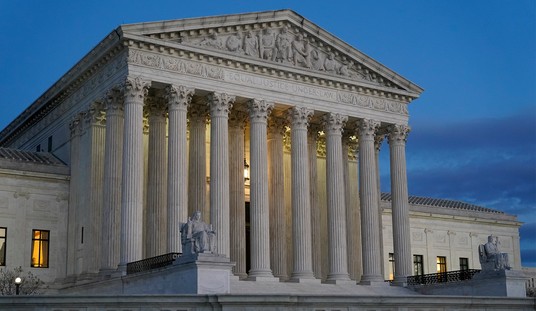The Republican victory on Tuesday night extended beyond taking the US Senate, several big blue state governorships, and picking up a net of at least 13 House seats.
Overshadowed by all the news from Washington and the statehouses was the historic wave that gave Republicans an unprecedented number of state legislative seats. The GOP now has control of both house and senate chambers in 24 states. They took control of an additional 6 state legislative chambers by capturing the Colorado and Maine Senates and state House chambers in Minnesota, New Mexico, West Virginia and New Hampshire.
To add insult to injury, they reduced the number of states where Democrats controlled both the senate and the house from 14 to 7.
It was truly a slaughter. The Washington Post reports:
Republican gains extended to state legislative chambers as well. Before Election Day, the GOP controlled 59 of 98 partisan legislative chambers across the country. On Tuesday, preliminary results showed Republicans had won control of both the Nevada Assembly and Senate, the Colorado and Maine Senates and state House chambers in Minnesota, New Mexico, West Virginia and New Hampshire.
That would give the party control of 67 chambers, five more than their previous record in the modern era, set after special elections in 2011 and 2012.
It also would give Republicans total control of 24 states, in which they hold the governor’s mansion and both chambers of the state legislature (Nebraska’s unicameral legislature is technically nonpartisan, but in practice Republicans control the chamber by a wide margin). Democrats, by contrast, are likely to control all three legs of the governing stool in only six states.
Many Republican majorities got bigger on Tuesday night. The GOP won outright control of state Senates in Washington and New York, which they had controlled under coalition agreements with centrist Democrats. By the early morning hours on Wednesday, Republicans claimed supermajority status in 16 legislative chambers. Republicans won four lieutenant governorships previously held by Democrats — in Arkansas, Illinois, Maryland and Massachusetts.
There are still several dozen state legislative races too close to call, so the GOP could pick up a couple of other state legislative chambers if those contests break in their direction. But it seems clear that Republicans will set a party record for the number of GOP state legislative office holders, eclipsing the old record of 4001 seats.
Libby Nelson, writing at Vox, points out the the long term consequences of Republican control of so many state legislatures:
One of the most-discussed consequences of Republicans’ state legislative takeovers in 2010 was for Congress. Republicans drew the electoral maps in the majority of states, and in the 2012 elections, took back the House majority despite getting fewer votes than Democratic candidates. Democrats also tend to be packed into urban districts, where Democratic candidates win large majorities. But redistricting sharply cut the number of competitive House districts, from around 100 in 2010 to about 39 this year.
The next redistricting isn’t until after the 2020 Census. But the overwhelming Republican control of state legislatures already matters for elections down the line in at least one key way: by weakening the Democrats’ legislative bench.
Statehouses are fertile ground for candidates for higher office from both parties. Nearly half of all members of Congress started out in statehouses. Forty-three Senators were once state legislators, including 27 Democrats. So were 217 voting House members, the majority of them Republicans. And, of course, there’s a former Democratic state senator from Illinois with a pretty important elected office right now.
There are still plenty of Democratic state legislators out there. But the fewer statehouses there are under Democratic control, the fewer opportunities those legislators have to make policy, become visible, and rise through the ranks. That’s a loss with ramifications that could last a generation.
The same thing happened to Republicans in the 1970’s. State legislatures were dominated by Democrats, thus preventing new leaders from gaining valuable experience at the state level before trying for a congressional seat. The answer was Pete DuPont’s GOPAC which sought out community leaders for public offices in the state legislature. Within a generation, GOPAC and other candidate schools would turn out the leaders who took control of the House of Representatives in 1994.
The Democrat’s problem isn’t bad candidates, although this time around, they had some doozies. Wendy Davis proved that running as a pro-abortion candidate in Texas doesn’t work. Martha Coakley proved she can be just as boring as a gubernatorial candidate as she was when she ran for the Senate. But generally speaking, the Democrats put up enough attractive, intelligent candidates to do well.
Their problem is that those candidates have to run on a platform that promises more tax increases, more government overreach, and less local control. It’s no accident that Democratic gubernatorial candidates in Illinois, Maryland, and Massachusetts lost. Fiscal problems in all three states doomed the two candidates looking to succeed Democratic governors in Maryland and Massachusetts and incumbent Pat Quinn in Illinois. It didn’t help that the Obamacare websites in Maryland and Massachusetts were botched from the beginning, thus lending credence to the incompetence narrative.
What happened Tuesday was a wave of revulsion against the state of the country and it’s management by Democrats. Republicans are not very well thought of either. And by 2016, the roles may be switched and it will be Republicans who will be punished. But at least, the GOP has an opportunity to make their case for governance by implementing a positive agenda for change.










Join the conversation as a VIP Member